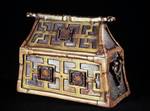Communication, cultural interaction and identity- The journey of artifacts in Viking Age Scandinavia
The aim of this project is to analyze the networks of communication between Scandinavia, the European continent, and the insular area in the Viking Age (750-1050 AD), by documenting and analyzing artifacts produced in either the insular or the continental area, but found in Scandinavia. The occurrence of these "foreign" artifacts reveals the parties in contact, as well as the exchanged resources. The reception or rejection of certain types of artifacts reflects deliberate choices made by the Scandinavians. Some types of artifacts, often of Continental origin, are imitated by the Scandinavians, while others (for example the Irish ones) are often broken to pieces and smelted down. These actions reflect the favored design and with which social groups the Scandinavians wanted to associate. In this perspective the archaeological data give an opportunity to interpret and explain the occurrence of "foreign" material culture in Scandinavia, as well as to uncover the different types of contact. In addition, it is possible to take a momentary look inside the Vikings' mentality and conception of life - the”foreign” artifacts is the result of deliberate choices.”
Coordinator: Maria Panum Baastrup
The project was running from 2008 until 2012

- "The Irish Shrine" is assumably transported to Scandinavia by a Viking, stolen from a church or monestary in England og Ireland. It is a good example of a cleric artefact brought to the Scandinavian area where it'll be part of a new context. It is some of these connections between Scandinavia and the rest of Europe this project will aim at analyzing.

